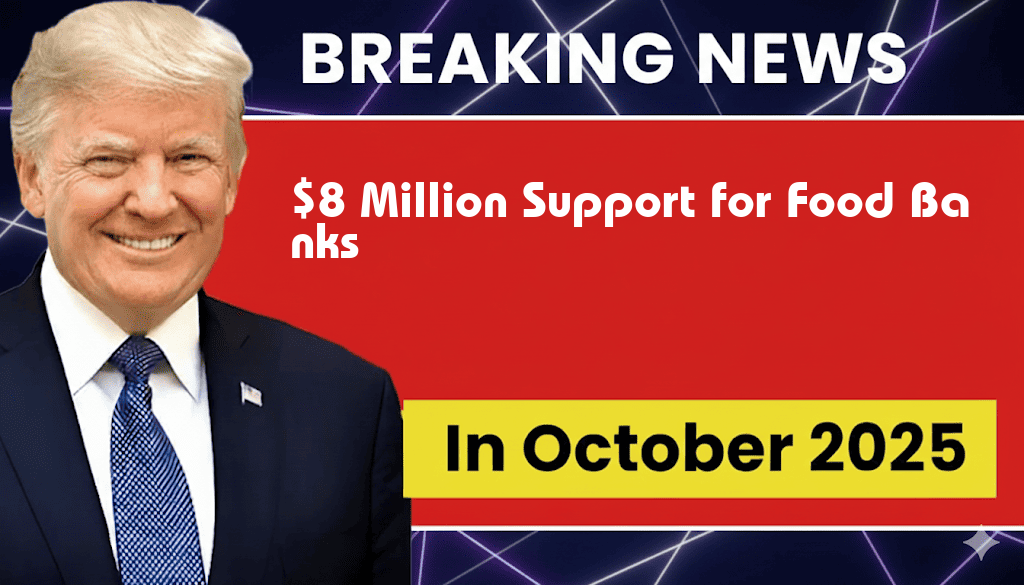As economic pressures mount and food insecurity rises, food banks across the United States are set to receive a crucial boost of $8 million in funding. This support comes at a time when many families are feeling the pinch from recent cuts to the Supplemental Nutrition Assistance Program (SNAP), affecting millions of Americans who rely on this essential aid. The funding aims to bolster local food banks’ efforts to meet the increasing demand for food assistance, as they face challenges in sourcing enough supplies to serve their communities. This initiative reflects a broader response to the growing hunger crisis exacerbated by economic instability and rising living costs.
Background on SNAP Cuts
Recent adjustments to SNAP have raised concerns among advocates and policymakers alike. In September 2023, the U.S. Department of Agriculture announced a reduction in benefits, which is expected to impact approximately 3.1 million households nationwide. The decision, centered around updated economic factors and program adjustments, has sparked a wave of criticism from food security advocates who argue that these cuts will disproportionately affect low-income families already struggling to make ends meet.
The Impact of SNAP Reductions
- Many households will see their monthly benefits decreased.
- Increased reliance on food banks is anticipated.
- Food banks report a surge in demand, with some seeing requests for assistance increase by over 30%.
Details on the $8 Million Funding
The $8 million allocation, announced by the federal government, will be distributed to food banks nationwide through the Emergency Food and Shelter Program (EFSP). This funding is designed to help local organizations procure food supplies, enhance distribution capabilities, and expand outreach to communities most in need. The move is part of a larger strategy to mitigate the fallout from SNAP cuts and ensure that vulnerable populations have access to nutritious food.
How the Funds Will Be Used
| Purpose | Percentage of Total Funding | Estimated Amount |
|---|---|---|
| Food Procurement | 50% | $4 million |
| Distribution Logistics | 30% | $2.4 million |
| Community Outreach and Education | 20% | $1.6 million |
Responses from Advocacy Groups
Advocacy organizations have welcomed the announcement of the funding but emphasize that it is merely a stopgap measure. Many leaders in the hunger relief sector stress the need for long-term solutions to food insecurity, urging lawmakers to reconsider the recent cuts to SNAP benefits. “While the $8 million will provide immediate relief to food banks, we must look at sustainable solutions that address the root causes of hunger,” said Maria Torres, director of the National Food Bank Network.
The Call for Comprehensive Solutions
- Advocates are pushing for increased SNAP funding.
- Long-term strategies to improve wages and job opportunities are crucial.
- Support for local agriculture and food production is essential for sustainability.
Looking Ahead
As food banks prepare to utilize the new funding, they face the ongoing challenge of maintaining adequate supplies to meet rising needs. The intersection of SNAP cuts and economic hardship highlights the pressing need for a coordinated response from both government and community organizations. With winter approaching, food banks are gearing up for what many predict will be a difficult season for families struggling with food insecurity.
For more information on the impact of SNAP and food bank initiatives, visit Wikipedia’s SNAP page and Forbes’ insights on food banks.
Frequently Asked Questions
What is the purpose of the $8 million support for food banks?
The $8 million support is aimed at helping food banks cope with the increased demand for food assistance resulting from SNAP cuts, ensuring that vulnerable communities continue to receive necessary resources.
How will the funding be distributed among food banks?
The funding will be allocated to various food banks across the region, with a focus on those that serve areas most affected by the SNAP cuts, allowing them to enhance their capacity and reach.
What are SNAP cuts and how do they affect food assistance?
SNAP cuts refer to reductions in benefits provided by the Supplemental Nutrition Assistance Program, which impacts low-income families’ ability to purchase food, leading to increased reliance on food banks.
When will the food banks start receiving this support?
The $8 million support is expected to be distributed to food banks within the coming months, allowing them to prepare for the anticipated rise in demand due to SNAP cuts.
How can individuals help food banks during this time?
Individuals can support food banks by donating food, volunteering their time, or contributing financially to help mitigate the effects of SNAP cuts on their local communities.
